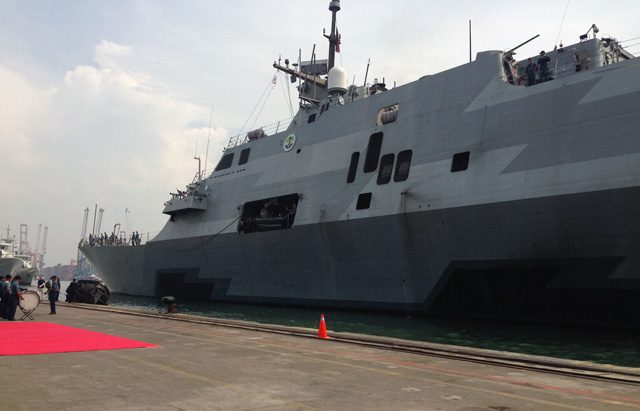Genoa Dockers Walk Out as Italian Unions Protest Against Israel
Striking dockworkers blocked access roads to the port of Genoa in northern Italy on Monday, as part of protests against Israel's offensive in Gaza.

JAKARTA, Indonesia (Dec. 22, 2014) The littoral combat ship USS Fort Worth (LCS 3) arrives in Jakarta, Indonesia. (U.S. Navy photo by Lt. Lauryn Dempsey/Released)
Just a day after arriving in Singapore, USS Fort Worth has been sent to assist the USS Sampson (DDG 102) with recovery efforts for Air Asia Flight QZ8501. The USS Fort Worth has just commenced her inaugural 16-month rotational deployment to the Indo-Asia-Pacific and brings increased capability and flexibility to the region.
Embarked onboard is an aviation detachment from Helicopter Maritime Strike Squadron (HSM) 35. As the US Navy’s first composite expeditionary helicopter squadron, the det consists a MH-60R Seahawk helicopter and a MQ-8B Fire Scout unmanned aircraft system.
The Fort Worth departed from San Diego on November 17, visiting Hawaii, Guam and Indonesia en route to Singapore. The remaining 15 months of her deployment will be spent in the Indo-Asia-Pacific region, with extensive operations planned. Fort Worth is scheduled to participate in CARAT 2015, as well as train with the Korean Navy in the Foal Eagle exercise and the International Maritime Defence Exhibition (IMDEX) in Singapore.
According to a Navy press release, “Fort Worth’s arrival marks the dawn of continuous LCS presence in the Asia-Pacific, bringing more flexibility and capability to the U.S. 7th Fleet,” according to Captain Fred Kacher, Commodore, Destroyer Squadron 7, based in Singapore. “The next 15 months will be busy for Fort Worth and she will operate extensively throughout Southeast Asia in support of CARAT 2015, as well as expanding her operational footprint to Northeast Asia.”
The rotational deployment will involve crew swaps, allowing the ship to remain deployed for a longer period than typical Navy deployment with a single crew, which range on average from 6-8 months.
This is the second deployment for a Littoral Combat Ship based in Singapore. The USS Freedom (LCS-1) pioneered the concept last year with a successful deployment. The LCS has proven to excel at working with regional navies in a partnership building capacity, improving regional maritime security and building maritime partnerships.

Sign up for gCaptain’s newsletter and never miss an update

Subscribe to gCaptain Daily and stay informed with the latest global maritime and offshore news
Essential news coupled with the finest maritime content sourced from across the globe.
Sign Up